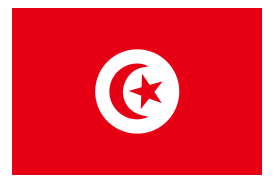Language/Tunisian-arabic/Grammar/Question-Formation
| ◀️ Independence Day and Other National Holidays — Previous Lesson | Next Lesson — Statement Construction ▶️ |
As a Tunisian Arabic teacher, I believe that mastering the structure for question formation in Tunisian Arabic is crucial for effective communication. In this lesson, I'll guide you to understand the proper ways to ask questions in Tunisian Arabic.
Introduction
In Tunisian Arabic, asking a question involves a specific word order or intonation. This lesson will provide you with the necessary tools to ask questions and the guidelines to structure them correctly.
Don't hesitate to look into these other pages after completing this lesson: How to Use Have & Past Tense Regular Verbs.
Question Structure
Usually, the question structure in Tunisian Arabic follows the same word order as in English, but with some variations.
In general, the structure for asking a question in Tunisian Arabic is as follows:
[Question Word] + Verb + Subject + Object
Let's take a look at some examples:
| Tunisian Arabic | Pronunciation | English |
|---|---|---|
| الترجمانا <<al-trajmana>> | /æl-tɾæd͡ʒ.mænæ/ | Did you translate it? |
| شنوة إسمه؟ <<chnouwa ِsmouh?>> | /ʃnuwæ ɪsmuh/ | What's his name? |
| وين حبيت تمشي؟ <<wein 7abitt tmchi?>> | /wein ħæbiːt tmʃiː/ | Where did you want to go? |
As you can see from the above examples, the word order is slightly different in Tunisian Arabic compared to English. However, the subject-verb agreement remains the same.
Types of Questions
There are Two types of questions in Tunisian Arabic that you need to be familiar with: Yes/No questions and Wh-questions.
Yes/No Questions
Yes/No questions in Tunisian Arabic require a simple structure. It involves asking a question that requires either a Yes or No answer. Generally, the question structure is like the following:
[Verb] + subject + [particle]
Here are some examples:
- هو جاي؟ <<hwa jay>> ("Is he coming?")
- يشرب الشاي؟ <<yshrab esh-shay?>> ("Does he drink tea?")
Wh-Questions
In Tunisian Arabic, Wh-questions involve asking a question that requires descriptive answers like Who, What, Where, When, and Why. Generally, the word order is like the following:
[Question Word] + Verb + Subject + Object
Here are some examples:
- شنوة إسمك؟ <<chnouwa esmek?>> ("What's your name?")
- فين دار؟ <<fein daar?>> ("Where do you live?")
It's important to note that in Tunisian Arabic, you can use the same structure for both Yes/No questions and Wh-questions by adding a questioning particle at the end of the sentence, such as:
- هل؟ <<hal?>> for Yes/No questions
- كيف؟ <<kife?>> for Wh-questions.
Conclusion
By mastering the structure for question formation in Tunisian Arabic, you're one step closer to fluency. Don't hesitate to practice and ask your Tunisian friends for help.
Hopefully, this lesson has provided you with the necessary tools and guidelines to structure questions properly in Tunisian Arabic. In the next lesson, we will be discussing statement construction.
Great work on completing this lesson! Take a moment to investigate these connected pages: Past Participle in Tunisian Arabic & Gender.
Other Lessons
- Statement Construction
- Adjectives
- Possessive Pronouns
- Interrogation and Question Indicators
- Possessive Case in Tunisian Arabic
- Negation Usage in Tunisian Arabic
- Gender
- How to Use Have
- Past Tense Regular Verbs
Template:Tunisian-arabic-Page-Bottom
| ◀️ Independence Day and Other National Holidays — Previous Lesson | Next Lesson — Statement Construction ▶️ |

